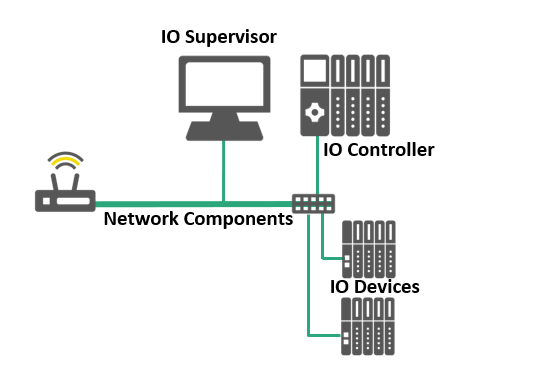PROFINET is a communication protocol to exchange data between controllers and devices. PROFINET components employ the consumer provider model for data exchange. With this model, controllers and IO devices can both assume consumer and provider roles, leveraging the full-duplex nature of Ethernet.
Now, let’s explore three component roles you can observe in a PROFINET installation:
Controller: This is typically the programmable logic controller (PLC) on which the automation program runs. This is comparable to a class 1 master in PROFIBUS. The IO controller provides output data to the configured IO devices in its role as provider and is the consumer of input data of IO devices.
Device: An IO device is a distributed I/O field device connected to one or more IO controllers via PROFINET IO. It is comparable to the function of a slave in PROFIBUS. The IO device is the provider of input data and the consumer of output data.
Supervisor: This can be a Programming Device, personal computer, or human-machine interface (HMI) device for commissioning or diagnostic purposes and corresponds to a class 2 master in PROFIBUS.
The lists below include examples of PROFINET controllers and devices.
PROFINET Controller Examples
- PLC
- Distributed Control System (DCS)
- Programmable Automation Controller (PAC)
- PC software applications
- High-end HMIs
PROFINET Device Examples
- IO
- Sensor
- Actuator
- Vision system
- Encoder
- Robot
- Drive
- VFD
- PROFINET switch
- Proxy
- Gateway
- Proces instruments
- RFID reader
- A controller acting as a device with I-Device
You can look for specific products by browsing through the product finder at profibus.com.
Get started with PROFINET by watching a free training video: How PROFINET Works A Beginners Guide.

